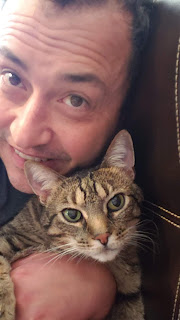Artificer Tribal (Rotation Proof Standard) Lessons Learned
I think all tribal decks have a few things in common.
1. Quick early game board presence- you see it with zombies, you see it with cats--there was no difference with artificers. Small creatures suddenly become large creatures on turns 2 and 3.
2. Springboarding into a large mid game-once the opponent gets his/her act together and starts putting down creatures that are more powerful than your early game creatures, you have to have a big monster (this includes monster removal spells) waiting in the wings.
3. Mana dependence- you have to make your land drops...at least until you reach your curve. This empowers any deck, but if you lose early game momentum in a tribal deck...everything could stall for you. Luckily, the mana curve on these decks is usually fairly low.
Time to move on to the next deck. I'm thinking I need a deck with a lot of discard triggers. I'm heading to Blue/Read Discard.
1. Quick early game board presence- you see it with zombies, you see it with cats--there was no difference with artificers. Small creatures suddenly become large creatures on turns 2 and 3.
2. Springboarding into a large mid game-once the opponent gets his/her act together and starts putting down creatures that are more powerful than your early game creatures, you have to have a big monster (this includes monster removal spells) waiting in the wings.
3. Mana dependence- you have to make your land drops...at least until you reach your curve. This empowers any deck, but if you lose early game momentum in a tribal deck...everything could stall for you. Luckily, the mana curve on these decks is usually fairly low.
Time to move on to the next deck. I'm thinking I need a deck with a lot of discard triggers. I'm heading to Blue/Read Discard.



Comments
Post a Comment